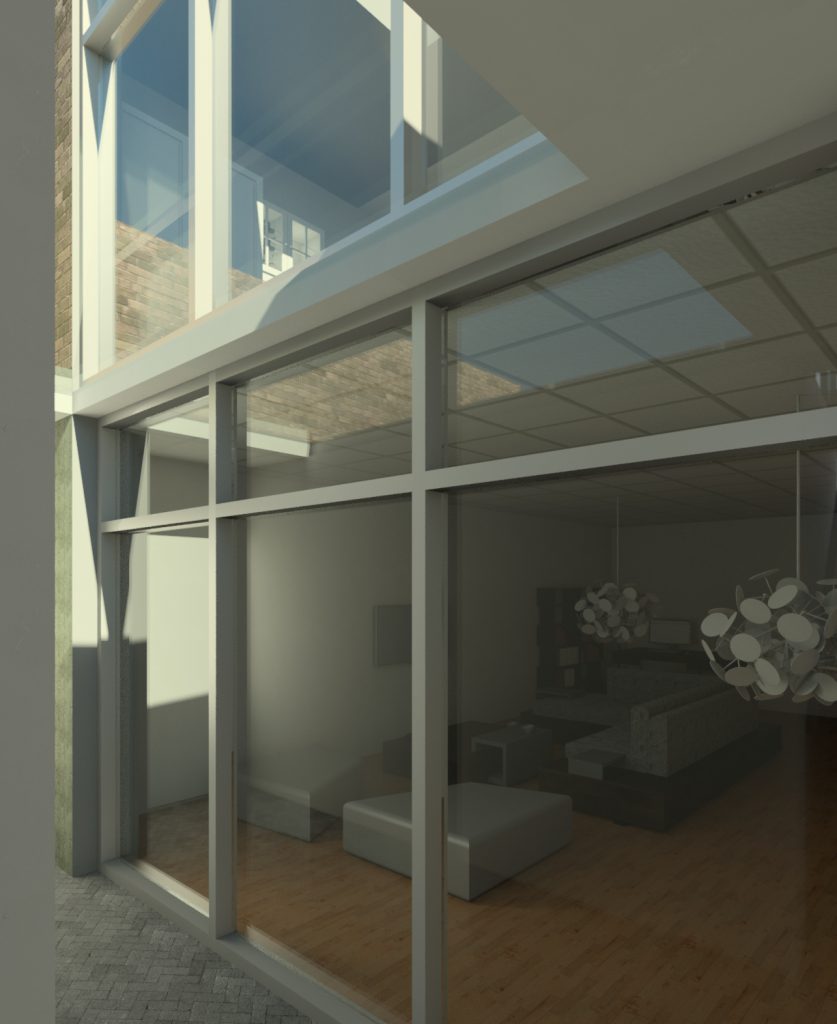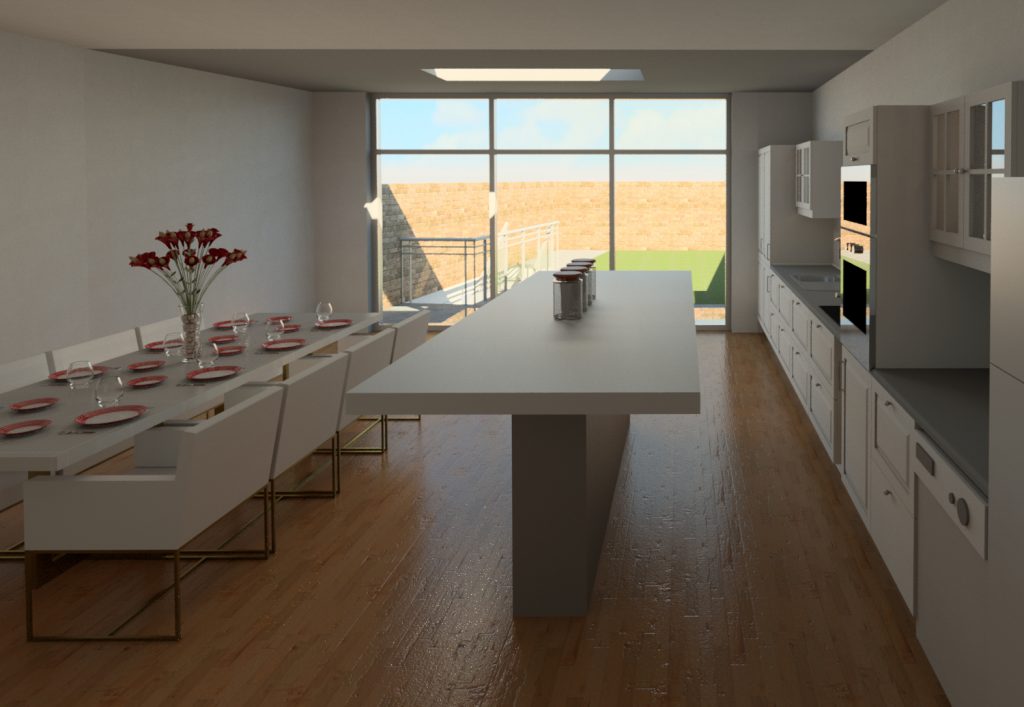As a continuation of our Fulham basement project, we take a closer look at a successful project nearing completion at Finlay Street in Fulham.
Like many projects, the brief follows a tried and tested formula executed across the board with private residences in Fulham. The first step is taking the initial L-Shaped victorian footprint and resolving ground the ground floor plan to a rectangle at the party wall. The additional width creates the right environment for a good size Kitchen and Dining space. Further to this, the new construction can be extended further from the existing back addition, following the London Borough of Hammersmith and Fulham Planning Policy.
With the new floor area in place, a standard approach is to create a front-to-back kitchen with an island. Adjacent to this a Dining table, often rectangular, is situated. With ground floor works there is a sensitivity with the height of the construction at a party wall. At Shape Architecture we have the expertise to steer the design towards the best outcome for the client through the planning phase. Approaches to gaining height at the party-wall, for example, can be found in placing joint applications with the next-door neighbour. In this case- if both sides agree to a raised height, for the benefit of either’s extension, then the planners will see often see this favourably. These avenues are worth exploring for those who would like to go down the route of building outwards and downwards to create more floor space for their property. We have used this approach and similar methods in Fulham primarily, as the terrace house configuration throws up this as an opportunity regularly; this was the case with the Finlay Street Development.
At the rear of the new extension, many projects specify bifold doors centrally aligned, often formed of PPC aluminium. Fully opened, the new door configuration completely removes the division of External and Internal space, and offers an unparalleled dining experience in the summer.
The materials of the new extension are chosen to match existing style, being sympathetic with the dwelling. It is clear that the London Borough of Hammersmith and Fulham Planning Department are looking to strike the balance between required development for 21st-century living, as well as placing a high value on existing Victorian architectural standards and design.
The basement sits below the ground floor extended footprint. As with many basements, an initial discussion with the client throws up the issues of access, and whether to follow the same stair layout to go down to the basement, or instead to introduce a feature staircase. A personal choice for the client, the staircase approach has an impact on the layout of spaces within the subterranean development.
As with similar projects mentioned in the ‘Fifteen Fulham Basements’ series, an emphasis is put on keeping the living and family spaces towards the front and rear, where natural light can enter through the formation of lightwells. The centralised areas receive the least natural light, and thus holds utility spaces, gymnasiums or bathrooms. A knock-on of having the floor space below means opening up of the above, allowing larger bedrooms on the first and second floors.
Many projects including Fulham include ‘pod-room’ developments as well as a Loft Conversion. With a joint planning application, Finlay Street was awarded permission for a front and back loft conversion, further allowing larger amounts of usable floor area on the second floor.
On Practical completion, the projects become wonderfully adapted to modern living, while still keeping their traditional charm, for this reason, more and more are enter the process of developing their dwellings in Fulham and Kensington as well as surrounding London boroughs.




